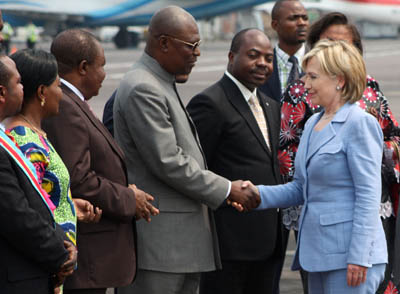
This post also appeared on Huffington Post.
It’s time for a new blood diamonds campaign, but this time for the conflict minerals that are tearing apart the Congo.
Ten years ago a handful of African countries were being torn apart by civil conflict perpetuated by the extraction and trade of “blood diamonds.” As the extent of the political, humanitarian, and environmental damage being done in countries like Sierra Leone, Liberia, and Angola became apparent, alarm bells began to ring. The result was a process in which western and African governments, industry stakeholders, concerned NGOs, and civil society came together to create a system that would legitimize the diamond sector and choke off funding to those belligerent leaders that depended on it. The global blood diamonds movement helped to end these wars, and the resulting Kimberley Process, although far from perfect, has helped to consolidate peace in those areas, playing a significant role in ending conflict in Sierra Leone, Liberia, and Angola.
Currently, we’re faced with a similar situation in eastern Congo. This area has been home to some of the most horrific violence in recent history, driven by the extraction and trade of “conflict minerals”—tin, tantalum, and tungsten, or the 3T’s, and gold. Armed groups, including the Congolese and neighboring armies, have battled for control of strategic minerals reserves in the region and prey off innocent communities for survival. These minerals provide the raw materials for industries as diverse as electronics, automobiles, and jewelry.
Eighteen months ago, U.S. Secretary of State Hillary Clinton visited eastern Congo and helped to compel the U.S. to re-address its policy toward the region. This visit was followed by U.S. legislation on conflict minerals and a regional governmental initiative on mineral certification. This creates an opportunity for transformative U.S. leadership in central Africa. As mandated by the legislation, the Obama administration is now set to release a strategy to Congress to address the linkages between the conflict mineral trade and human rights abuses in Congo. A successful strategy will be impossible without making two key elements the centerpiece: a minerals certification process for legitimate extraction and trade, and national army reform.
The current administration should collaborate with Congo and regional partners to take the lead on driving the nascent certification processes already underway. Following the Dodd-Frank legislation, President Kabila of Congo is seeking such a partnership with the U.S. to reform the sector. Greater engagement will spur more productive private sector participation from U.S.-based companies in key industries and align their need to comply with legislation aimed at ending mineral-fueled violence in Congo.
The U.S. finds itself in a unique position because our economic influence to combat the illicit minerals trade provides the missing leverage for leaning on the Congolese state to deliver meaningful security sector reform. Criminal networks within the Congolese national army are a major impediment to legitimacy in the development of Congo’s eastern provinces. Military justice is paramount to reform and the U.S. can make a significant contribution by supporting military justice initiatives within the country, including broadening the focus to include economic crimes.
Given the enormity and complexity of the conflict in the Congo, it is easy to devise a strategy for tackling the conflict mineral issue that details the laundry list of initiatives already underway with limited U.S. support—but that’s not enough. If the Obama administration doesn’t lead this process, it effectively relinquishes power to malicious actors with interests in both the minerals trade and the security sector who are actively seeking to maintain the status quo. A successful U.S. strategy must entail a commitment to certification as the framework for local efforts to demilitarize the Congolese mining sector, in conjunction with a surge in support for military justice.
Heading into the new year, the Obama administration signaled its intent to increase engagement in Africa. In the Congo—the lynchpin to stability in the region—the administration is positioned to bring credibility and coherence to the emerging multilateral architecture developing around Congo’s conflict minerals, bolstering the hard-fought efforts here in the U.S, while at the same time supporting efforts toward peace and legitimate economic development in Congo. Secretary Clinton’s follow-through on eastern Congo could bring the Obama administration one step closer to its New Year’s resolution on Africa.

